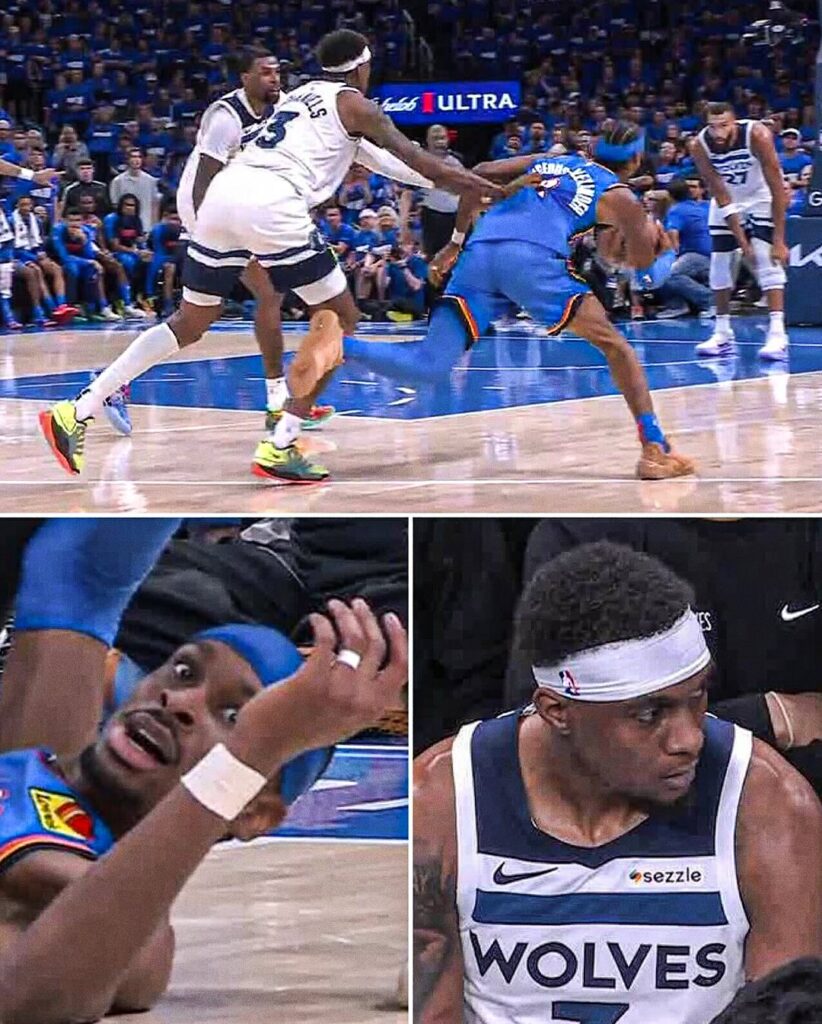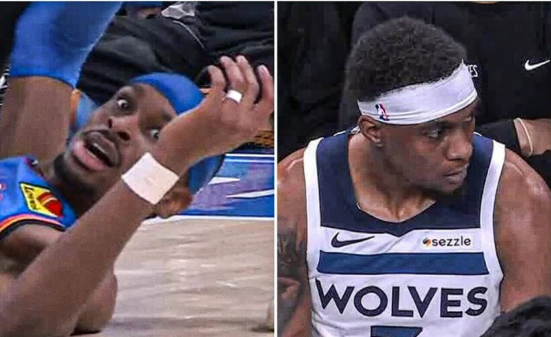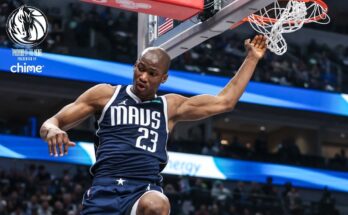
In a game filled with intensity and high stakes, a moment of controversy unfolded when Jaden McDaniels was called for a flagrant 1 foul on Shai Gilgeous-Alexander (SGA). The incident quickly became a hot topic among fans, analysts, and players alike, sparking debates about the nature of the foul, the league’s officiating standards, and the broader context of physicality in today’s NBA.
The Incident: What Happened?
During a pivotal point in the game, Shai Gilgeous-Alexander was driving aggressively toward the basket, showcasing his trademark blend of speed, agility, and craftiness. As SGA attempted to finish at the rim, Jaden McDaniels—known for his length and defensive versatility—came up to contest the shot.
The contact occurred as McDaniels extended his arm, and it appeared to many observers that his hand made significant contact with SGA’s upper body, affecting the shooter’s rhythm and balance. The referees immediately reviewed the play and assessed McDaniels with a flagrant 1 foul.
What Is a Flagrant 1 Foul?
A flagrant 1 foul in the NBA is defined as unnecessary contact committed by a player against an opponent. It is a step above a regular personal foul and indicates that the contact was avoidable and not a legitimate basketball play but does not rise to the level of “violent” or “excessive” contact, which would warrant a flagrant 2.
The immediate consequence is that the fouled player is awarded two free throws and their team retains possession. It’s also a warning to the offending player and a potential precursor to more severe penalties if similar behavior continues.
Why Was McDaniels’ Foul Called Flagrant 1?
The referees deemed that McDaniels’ contact was more than just incidental or a part of normal defensive effort. The placement of the hand and the timing suggested intent to disrupt SGA’s shot beyond what’s allowed under league rules.
In today’s NBA, the league is increasingly strict about protecting offensive players, especially on plays at the rim. Officials want to prevent defenders from using excessive force or making contact that compromises the safety or scoring opportunity of the offensive player. McDaniels’ foul fell into that category, triggering the flagrant 1 call.
Reaction from Fans and Analysts
The call immediately divided opinion. Supporters of Shai Gilgeous-Alexander argued that the foul was clear and justified, pointing out the visible impact on SGA’s shot and emphasizing the league’s ongoing efforts to protect star players and promote offensive flow.
On the other hand, some fans of McDaniels and his team viewed the call as too harsh, arguing that basketball is inherently a physical game, and some contact is inevitable and often unavoidable. They claimed that McDaniels was simply playing tough defense and that the contact was unintentional or incidental.
Prominent analysts broke down the play, highlighting how referees must balance physicality with fairness. Many agreed that while McDaniels was aggressive, the contact did cross a line that warranted the flagrant 1. The consensus leaned toward the idea that protecting players like SGA—who are often targeted by defenders—is crucial to maintaining the game’s integrity and excitement.
The Broader Context: Physicality in Today’s NBA
The incident between McDaniels and SGA touches on a larger conversation in the NBA about the limits of physical defense. Over the past decade, the league has trended toward stricter enforcement of rules that protect offensive players, especially shooters and players attacking the basket.
This shift aims to encourage offensive creativity and scoring while reducing injuries caused by overly aggressive defense. While many fans appreciate the faster, higher-scoring games that result, some traditionalists lament that the game has lost some of its physical edge.
Players like Jaden McDaniels walk a fine line. Defenders want to be aggressive and impactful without risking fouls that can hurt their team. As a rising defensive talent, McDaniels’ intensity is an asset, but incidents like this remind players and coaches of the importance of timing and control.
Impact on the Game
The flagrant 1 call had an immediate effect on the game’s momentum. Shai Gilgeous-Alexander capitalized on the free throws, adding points to his team’s tally and maintaining possession. The call also energized SGA’s team, which used the momentum shift to spark a crucial run.
For McDaniels, the foul was a setback. Not only did it cost his team points and possession, but it also put him on notice with the referees. Continued aggressive fouling could have led to further disciplinary action, such as a flagrant 2 or even an ejection.
Looking Ahead: What This Means for Players and Officiating
The McDaniels-SGA incident serves as a reminder that the NBA’s officiating continues to evolve. Players must adapt their defensive techniques to avoid costly fouls, while referees must consistently enforce rules that protect player safety and offensive flow.
For Jaden McDaniels, this foul could be a learning moment in his young career. Balancing aggressiveness with discipline is key for defenders who want to make an impact without harming their team’s chances.
For Shai Gilgeous-Alexander, the call underscored the respect and protection that stars of his caliber now receive—a testament to his elite status in the league.
Conclusion
The flagrant 1 foul on Jaden McDaniels for his contact with Shai Gilgeous-Alexander became one of the defining moments of the game, igniting conversations about physicality, officiating, and player safety in the modern NBA. While opinions on the call varied, its impact was clear: it shifted momentum, highlighted the league’s protective stance on offensive players, and underscored the fine line defenders must tread.
As the NBA continues to grow and evolve, moments like these remind us of the delicate balance between hard-nosed defense and fair play—and why every call matters.



